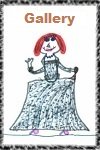Dave Musgrove Interview
Dave Musgrove is the editor of the top selling "BBC History Magazine", and is also the author of 100 Places That Made Britain , released in 2011.


hfk: Thanks for agreeing to speak to us. Can you tell us a little about the book please?
DM: The idea was simple: I asked 100 historians to each nominate one
place In Britain that they considered to be particularly significant
historically, and to tell me why. Armed with their insight, I visited
each place and wrote an account of why it mattered then and what it’s
like to visit now.
hfk: So if you did not choose the 100 yourself, were there any
choices you disagreed with, or any omissions that disappointed you?
DM: The nominations were made by historians (excepting one choice that I
allowed myself – I chose Bosworth Battlefield). There weren’t any
choices that I particularly disagreed with, but of course there were
many notable omissions. Particularly, the book starts with the arrival
of the Romans, so none of our fabulous prehistoric sites are included
(that means no Stonehenge or Skara Brae for example- fabulous places to
visit and amazing stories to be told, perhaps there’s another book in
it). Prehistoric sites are always great places to visit with kids I
think as they are invariably out in the open, and with lots of space to
burn off energy
hfk: I understand you visited all 100 places with your children. Can
you tell me which places they enjoyed visiting most, and which of them
you think taught them the most.
DM: I visited quite a few of the places with my children, but not all of
them. Those that were notable successes with the kids were ones that
provided most space for running around I suppose (my three children were
all under three when I was doing the research for this). Vindolanda was
great – lots of small walls to sneak around behind, plus the
reconstructed section of fort was fun to climb up; Battle Abbey was
enjoyable for a long walk in the rain, lots of puddles to splash in;
Iona Abbey involved an exciting ferry crossing and then afforded an
opportunity to play on the beach near the abbey; Whitby Abbey provided
the background for a good game of hide and seek, and Hatfield House was
particularly good as it had a great play area in the grounds of the
Elizabethan mansion.
hfk: I would have chosen the SS Great Britain in Bristol. It is amazing what they have done there.
DM: The SS GB is in the list.
hfk: Which of the 100 places surprised you most?
DM: Longthorpe Tower in Peterborough was a real treat – a medieval tower
in an otherwise innocuous suburb of Peterborough. Inside is an absolute
treasure of medieval wall paintings that really strikes home the point
about how different people in the Middle Ages were from us today.
hfk: Do your children share your love of history? Any tips on building enthusiasm in the little ones?
DM: They are still pretty young yet but I’m hopeful they will. They
regularly talk fondly of visiting castles. I think the important thing
is to not overload them and visit places that have space to explore and
run around, where the history might become part of the games.
hfk: Thanks very much for your time. Good luck with the book.




